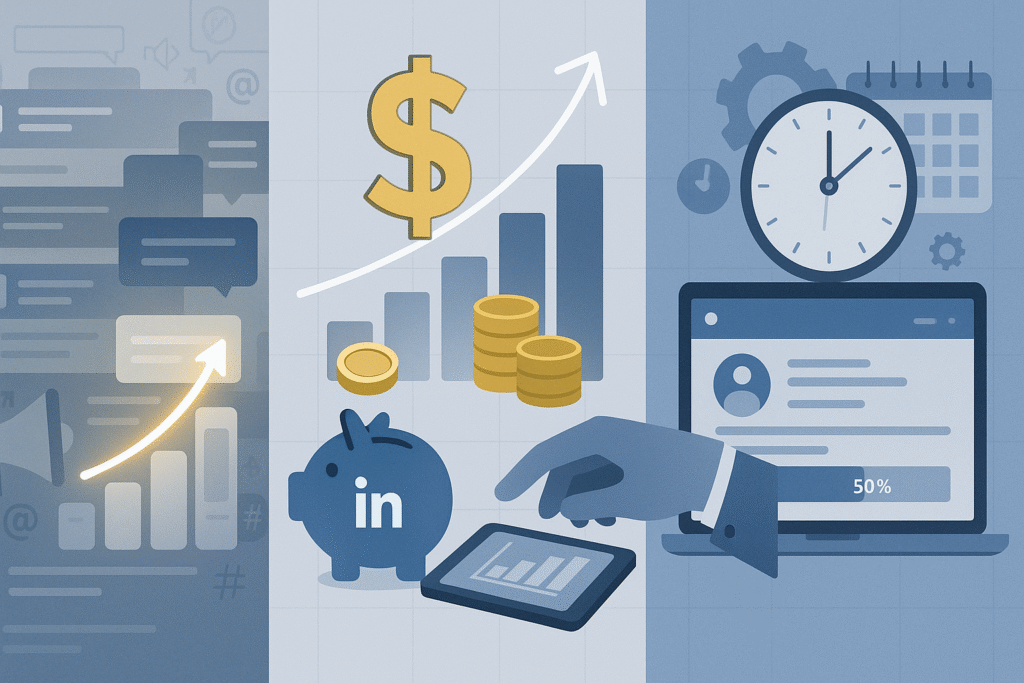In the evolving landscape of digital marketing, selecting the right platform is crucial for reaching and engaging with the desired audience. Among various social media platforms, LinkedIn has emerged as a preferred choice for professional marketing. This article delves into the factors that make LinkedIn an effective platform for professional marketing, providing insights into its features, benefits, and strategic advantages.
Table of Contents
Understanding LinkedIn’s Unique Position in Professional Marketing
LinkedIn stands out as a platform tailored for professionals, offering a space where businesses and individuals can connect, share insights, and foster professional relationships. Its focus on career development and business networking creates an environment conducive to professional marketing efforts.
Key Features Supporting Professional Marketing
- Professional User Base: LinkedIn’s user base comprises professionals across various industries, making it an ideal platform for B2B marketing and professional outreach.
- Content Sharing Capabilities: The platform allows for sharing articles, updates, and multimedia content, facilitating thought leadership and brand visibility.
- Advanced Targeting Options: LinkedIn provides detailed targeting based on job titles, industries, and professional interests, enabling precise marketing campaigns.
Advantages of Using LinkedIn for Professional Marketing
1. Access to a Professional Audience
LinkedIn’s user base is predominantly composed of professionals, including decision-makers and industry leaders. This demographic is valuable for businesses aiming to market products or services in a professional context.
2. Enhanced Lead Generation
The platform offers tools like Lead Gen Forms and Sponsored Content, which are effective in capturing leads directly within the platform, streamlining the lead generation process.
3. Building Brand Authority
By consistently sharing insightful content, businesses can establish themselves as thought leaders in their respective fields, enhancing brand credibility and trust among the professional community.
4. Networking Opportunities
LinkedIn facilitates connections with potential clients, partners, and industry peers, expanding professional networks and opening avenues for collaboration.
Strategies for Effective Professional Marketing on LinkedIn
1. Optimize Company and Personal Profiles
Ensure that profiles are complete, up-to-date, and reflect the brand’s professional image. This includes using professional photos, detailed descriptions, and relevant keywords.
2. Share Valuable Content
Regularly post content that provides value to the target audience, such as industry insights, informative articles, and updates on relevant trends.
3. Engage with the Community
Participate in discussions, comment on posts, and join relevant groups to increase visibility and foster relationships within the professional community.
4. Utilize LinkedIn Analytics
Monitor the performance of posts and campaigns using LinkedIn’s analytics tools to understand what resonates with the audience and adjust strategies accordingly.
LinkedIn’s Tools Supporting Professional Marketing
LinkedIn Ads
Offers various ad formats, including Sponsored Content, Message Ads, and Dynamic Ads, allowing businesses to reach their target audience effectively.
LinkedIn Sales Navigator
Provides advanced search capabilities and insights, aiding in identifying and connecting with potential leads and clients.
LinkedIn Learning
While primarily an educational platform, it can be utilized to share knowledge and establish expertise in a particular field.
Challenges and Considerations

While LinkedIn offers numerous benefits for professional marketing, it’s important to consider potential challenges:
- Content Saturation: With many businesses sharing content, standing out requires consistent, high-quality posts.
- Cost of Advertising: LinkedIn ads can be more expensive compared to other platforms, necessitating careful budget planning.
- Time Investment: Building a presence and engaging with the community requires a significant time commitment.
Conclusion
LinkedIn’s focus on professional networking, combined with its robust tools and features, makes it a powerful platform for professional marketing. By leveraging its capabilities, businesses can effectively reach and engage with a professional audience, generate leads, and build brand authority. Success on LinkedIn requires a strategic approach, consistent engagement, and a commitment to providing value to the professional community.
Frequently Asked Questions (FAQ)
Q1: Why is LinkedIn considered effective for professional marketing?
A1: LinkedIn’s user base consists of professionals and decision-makers, making it ideal for B2B marketing. Its features support targeted advertising, content sharing, and networking, all of which are essential for professional marketing.
Q2: How can businesses generate leads on LinkedIn?
A2: Businesses can use tools like Lead Gen Forms, Sponsored Content, and InMail campaigns to capture leads directly on the platform. Engaging content and active participation in relevant groups also contribute to lead generation.
Q3: What types of content perform well on LinkedIn?
A3: Content that provides value, such as industry insights, informative articles, and professional tips, tends to perform well. Visual content like infographics and videos also garner higher engagement.
Q4: Is LinkedIn suitable for small businesses?
A4: Yes, LinkedIn offers opportunities for small businesses to connect with a professional audience, build brand awareness, and establish authority in their niche through strategic content sharing and networking.
Q5: How often should businesses post on LinkedIn?
A5: Consistency is key. Posting several times a week ensures visibility and keeps the audience engaged. However, the focus should be on quality over quantity.
Q6: Can LinkedIn be used for industries outside of B2B?
A6: While LinkedIn is predominantly used for B2B marketing, professionals from various industries are present on the platform, allowing for diverse marketing opportunities.
Q7: What are the best practices for LinkedIn advertising?
A7: Define clear objectives, target the right audience, use compelling visuals and copy, and continuously monitor and adjust campaigns based on performance metrics.
Q8: How does LinkedIn compare to other social media platforms for professional marketing?
A8: LinkedIn is specifically designed for professional networking and B2B marketing, offering features and a user base that align with professional marketing goals, setting it apart from other social media platforms.



